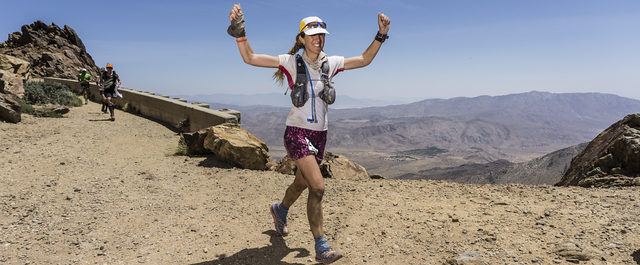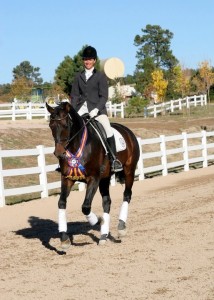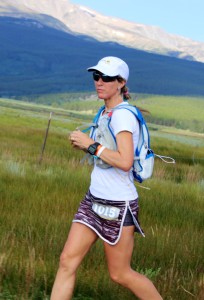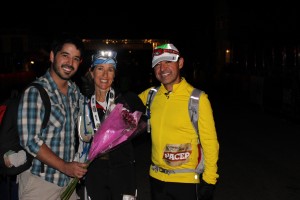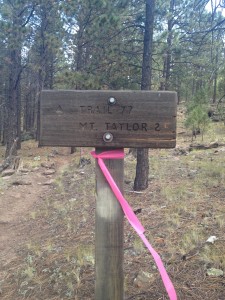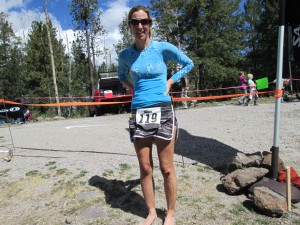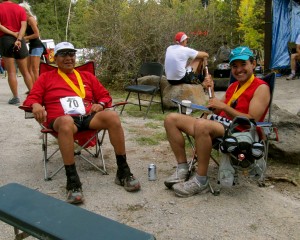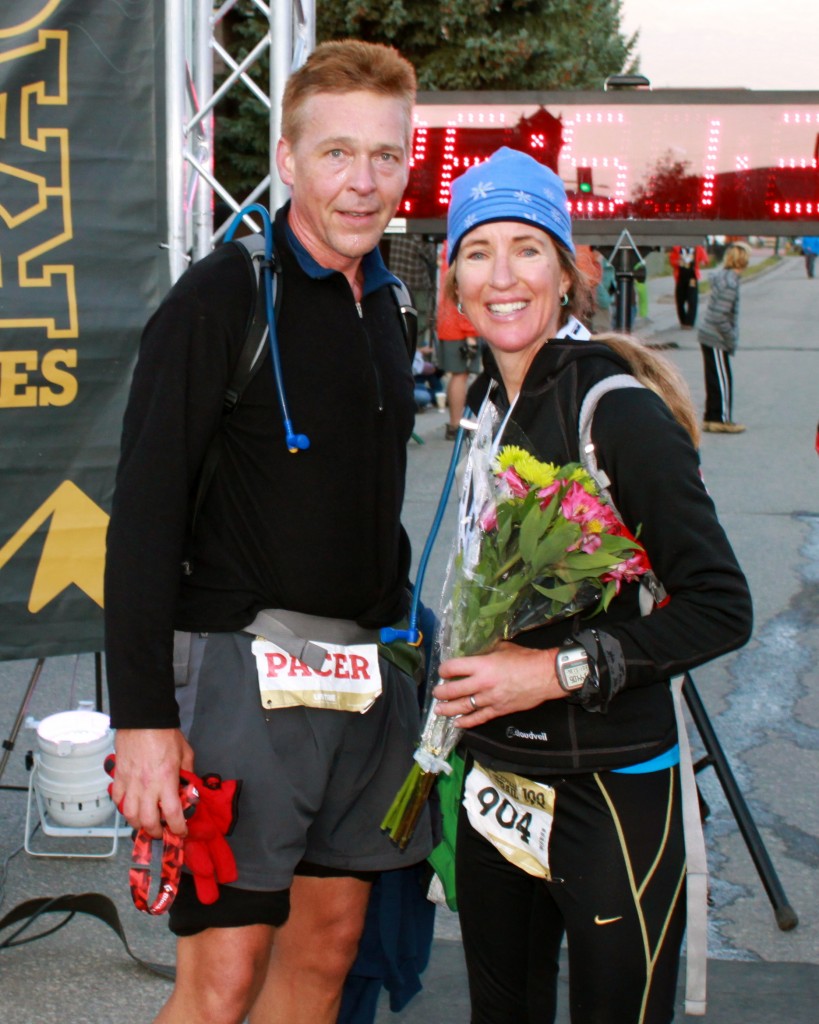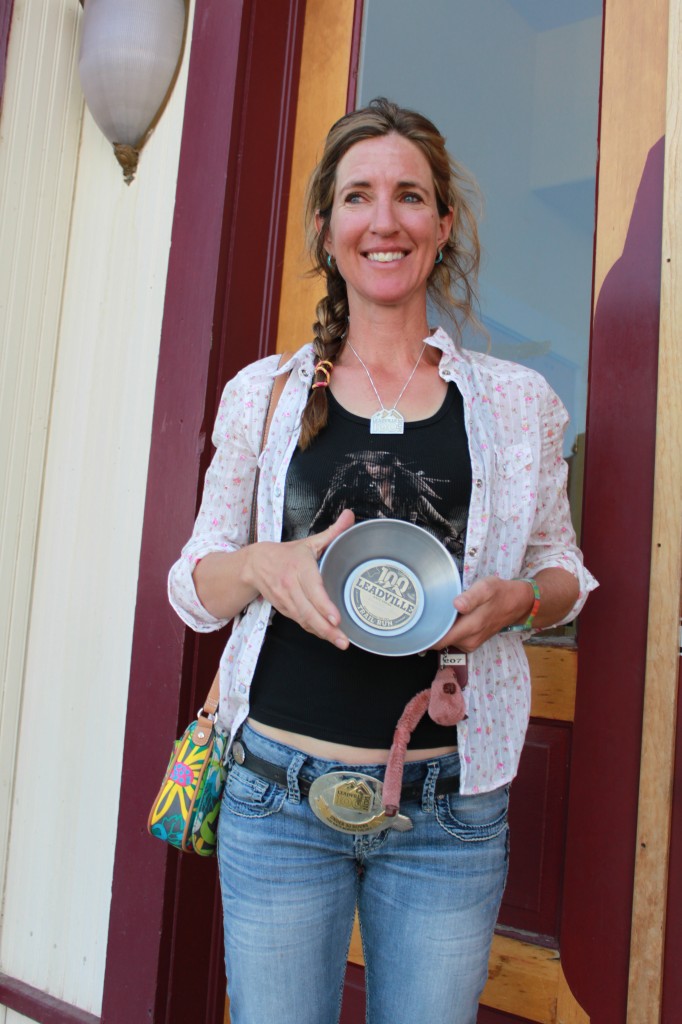Bryce Canyon 100
June 14, 2014.
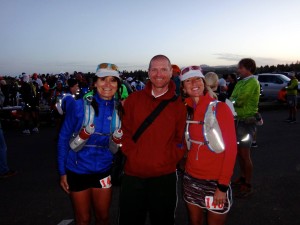
At 6 am, the dawn greets the 150 or so intrepid souls who have gathered at the starting line of the Bryce Canyon 100. Adrian, Rachael and I snap a last pre-race photo so we have a “before” picture. Matt Gunn, the RD with a knack for spectacular course designs, sends us off without much ceremony. We run down a mile or so of dirt road before filing onto singletrack and up the first of countless climbs of the day.
The sun rises, and we settle into strategic positions for the miles ahead. I have been nursing a pulled adductor and an ankle injury, but decided to throw caution into the wind and run anyway. The photos on the website were too gorgeous to ignore. And who knows, maybe my injuries need nothing more than a little tough love to heal. After ten miles or so, the adductor loosens up and stops hurting. I feel validated, and blissed out by the unfolding panorama of red rocks under blue skies, hoodoos in otherworldly formations, green meadows, old forest. Cameras flash all around. This is one of the few times, ever, that I wish I’d brought my phone along on a run.
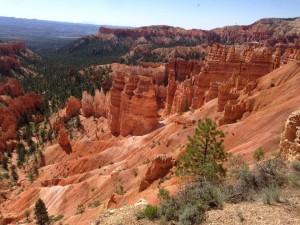
Sunny optimism prevails until mile 25, when, while blazing down a gnarly piece of descent, my left ankle rolls and I take a nosedive. Sharp pain shoots up the outside of my calf.
Ouch. Same ankle as last week, which is not good. I remain curled into the fetal position for a bit, wallowing in a puddle of self-pity while using a full alphabet’s worth of English and German curse words that makes several passing runners blush.
@(#(&$%. @(&$(&#&(*%$
(This part of the race report has been censored).
I figure this will be my inaugural DNF. The next aid station is at mile 28, and getting there will take me a while in this reduced condition. I limp along slowly, still using foul language that eventually subsides to a muted grumble, until the welcome sight of Blubber Creek, where I sink into a chair, feeling defeated. The ankle has reached the size of a grapefruit, and not a pretty one. A kind volunteer named Lee offers kineo tape from his personal stash. I’ve seen those bright strips of tape on other runners, but always figured they put it on themselves just to look badass, like a type of war paint. Adrian Stanciu zooms by and asks what happened, sympathy in his voice. I shrug, resignedly. Oh well. But once Lee finishes his expert wrap job, I get up and realize I can walk without a limp. Yippeeee! I jog a few steps. No pain. Ok, very little pain. Maybe I can make it to mile 50, which will at least allow me to see the entire course.
I thank Lee, aka the patron saint of Blubber Creek, and take off.
The sun climbs higher, along with the temperature. The singletrack becomes double track, and less technical, which my ankle appreciates. Climbing feels better than descending. I negotiate the downhills gingerly, conscious of the taped ankle. I know that another roll will end this race, and probably future races along with it. But when the spectacular pink cliffs come into view at mile 45, I begin to think I should finish. By the time mile 50 approaches, have found many totally rational reasons to continue: Allen, my mentor and friend, has come all the way from Texas to pace me for the second half of the race. I can’t let him down. I will see the pink cliffs again in the evening light on the way back — a view worth risking permanent joint damage for. My ankle still feels pretty good after running 25 miles, so another 50 should be ok. And so on.
Ultra runners are known to be very sane, intelligent people full of common sense. It is perfectly normal to try and run 75 miles on a sprained ankle. I decide to follow the voice of reason, which whispers in my ear to go for it. Allen is waiting at the turnaround. Thankfully, he agrees that finishing is possible on a taped and sprained ankle. Experienced ultra runner that he is, I tend to trust his judgment. But then I remember pacing him at this race last year, when he ran twenty-plus miles on a torn Achilles’ tendon. Maybe his judgment regarding injuries is not as sound as I thought. In any case, we’re off. I have counted three women ahead of me, not very far ahead, but while I feel I can go on, I also know that it’s the wrong day to race anyone. I chase all competitive thoughts out of my head. Finishing without further damage becomes my A-goal. Staying upright is essential to achieve it, which means absolutely no hammering the downhills. I have been trading places with Adrian several times since the start, but at mile 65 he races ahead, looking strong and confident on his way to a spectacular sub-24 hour finish. I continue to jog along, at a cautious but consistent pace. The sun sets, the bright colors fade to shades of grey, then to black. A full moon rises over the trees and hoodoos, casting their silhouettes in a surreal, silvery twilight. This is one of my favorite parts during a 100 mile run: being out there in the dark, traversing the wilderness one step at a time and trusting that the little reflective strips gleaming in the distance will lead to the next aid station. Fine dust dances in the circles of light our headlamps throw on the trail. Left foot, right foot, breathe in, breathe out. The night is chilly and quiet, and the chaos of the world seems far away. Running like this is a reminder to live in the moment. There is no point in worrying about anything outside the spot of brightness just ahead. But my spot of brightness begins to dim around mile 79. No problem, I just need to get the ziploc baggie with the spare batteries from my pack. I sit down on a log and frantically dig around every pocket until I remember that I’ve thrown a wad of ziplocs into the trash can at mile 65. One of these contained my spare batteries.
This has got to be one of the dumbest things I’ve ever done, in an ultra or otherwise. Without Allen, I would have to wait for the next runner to come along, or prepare to bivouac in the woods until morning. His head lamp is still strong and allows us to negotiate the three miles to the next aid station, with me feeling like a complete idiot.
My head lamp takes an exotic type of short, fat battery. No one at the aid station has any of these to spare, which isn’t surprising. While feasting on Ramen noodles, we agree that the best solution is for me to go on alone. I appreciate Allen more than ever. Only a true friend would consent to being left behind at an aid station in the middle of nowhere at 3 a.m. because the runner they’re pacing is an irresponsible scatterbrain. I put on Allen’s head lamp, thank him from the bottom of my humbled heart, and take off.
The last 18 miles are full of climbs and descents. My legs still are in good working condition, but I do feel that ankle. I run all the gentle uphills and downhills, and walk the steeper sections. Still, I catch up to a couple of other runners who move at an even slower pace, or have stopped moving altogether. Mile 90 brings a welcome surprise: my friend Risa is volunteering at the Thunder Mountain aid station. She has traveled from LA to pay back some of the kindness she experienced at the Zion 100. Ultra running is full of wonderful people. I love this sport, for its challenges and its good karma. We wave goodbye as I leave, fortified by soup, peanut butter, and warm emotions.
The last ten miles have some serious climbs in them. I dimly remember the steep downhills from this morning . . . no, yesterday morning. I also remember thinking that the uphills on the way back might feel grueling after mile 90. But I don’t remember just how many more hills there are before the finish. For a while, I expect to see the dirt road open up around the next curve, or the next. Or the next. Nope, another climb. And yet another. I try not to get my hopes up after going through the cycle of anticipation and disappointment a few times. Instead, I try to accept, and appreciate, the present moment: the first light of the new dawn. The rosy clouds in the morning sky. The rock formations in shades of red, pink, and orange. Allen’s powerful headlamp, which I now get to turn off. My body, which, apart from the by now somewhat sore ankle, feels pretty good after covering 96 or so miles. I can still run. My quads are tired but not destroyed. The dirt road finally opens up, and I decide to race the last couple of miles. I have energy, and it feels safe on a gentle, level surface. I pass another runner less than a mile from the finish. Maybe taking it easy for most of the last 70 miles was a good idea. I’ve never sprinted like that 99 miles into a 100-miler, but then this is only my fourth. I’m still learning.
I finish in 25:08, fourth place female, having missed third by only 15 minutes and less than an hour behind the first-place woman. Not bad, considering everything that went wrong.
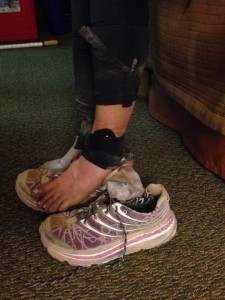
This is a beautiful, challenging, mind-blowing and very well organized race. Thank you, Matt, for your energy and vision. Thank you, Lee, for the magic tape. Thank you, Allen, for all the moral support and good advice, and for the light in dark places. Thank you, Rachael and Adrian for sharing this beautiful experience. I’m looking forward to our next epic adventure.
